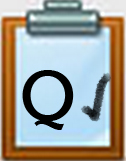Q5 Safe & Secure: Passwords
Passwords
Work with a small group or partner (check with your teacher) to watch the three videos about passwords below. Each member should take notes about any tips or cautions to share with the group.
Step 1. With your group, refer to your notes and discuss the following questions:
- Why should you keep your passwords to yourself?
- What should you do to have a safe and strong password?
Step 2. Together, create four passwords you think would be good examples and why.
Step 3. Share your examples with others in your class to see if they are good.
Step 4. Collaboratively create a poster or list about the importance of good passwords and how to create them.
Step 5. Brainstorm ideas for securely and conveniently managing passwords as a class.
When finished with the AUP and Passwords pages, ask your teacher if you or your group should use this rubric to score your work. RUBRIC
PASSWORDS VIDEO #1
Play the video below. This is about a teen who gave her best friend's password to some friends and what happened afterward.
Cyberbullying - Broken Friendship
Direct link (1:50 min.)
USERNAMES & PASSWORDS VIDEO #2
Play the video below. This is a scene from an animated video about passwords. A sad student shares that she is getting emails from people she doesn't know.
PASSWORDS VIDEO #3
Play the video below to learn how to create a strong password.
How to Create a Strong Password
Direct link (3:30 min.)
Recommendations
We highly recommend that you research this by checking several reviews on the web and talk with your teacher and/or computer teacher and parent or guardian before making a decision.
In summary, do NOT use:
- Numbers in sequence, such as 123456
- Something that includes your username or part of it
- Your birthday, name, pet's name, town, school
- Repeating letters such as aaaaa.
- The word password.
Do:
- Use one or more capital and lowercase letters, a number or two, and a character like an asterisk * or exclamation mark!
- 6-9 letters or characters, the longer the better.
- Change it frequently (each semester or more often).
- Use two-factor authentication when possible (2FA).
- Use strong antivirus software.
Competencies & Standards
MITECS Michigan Integrated Technology Competencies for Students, and
3. Knowledge Constructor
a. Plan and employ effective research strategies to locate information and other resources for their intellectual or creative pursuits
Websites and Documents
Websites
- 6 Things a Safe Username Should Always Do from Dashlane
- 8 Do's and Don'ts Of Good Passwords from Educause
- Top Ten Tips for Teens on Strong Passwords from Cyberbullying Research Center
- AUP Examples
- Cell Phone Safety
- How to Create the Perfect Username-Lifewire
- How to Make a Unique Username-wikiHow
- Namechk
Videos from Outside Sources
- Broken Friendship YouTube (1:50 mins)
- How to Create a Strong Password YouTube (3:30 mins)
- Two Factor Authentication (2FA) YouTube (2:35 mins)
21t4s Videos
21t4s Documents & Quizzes




